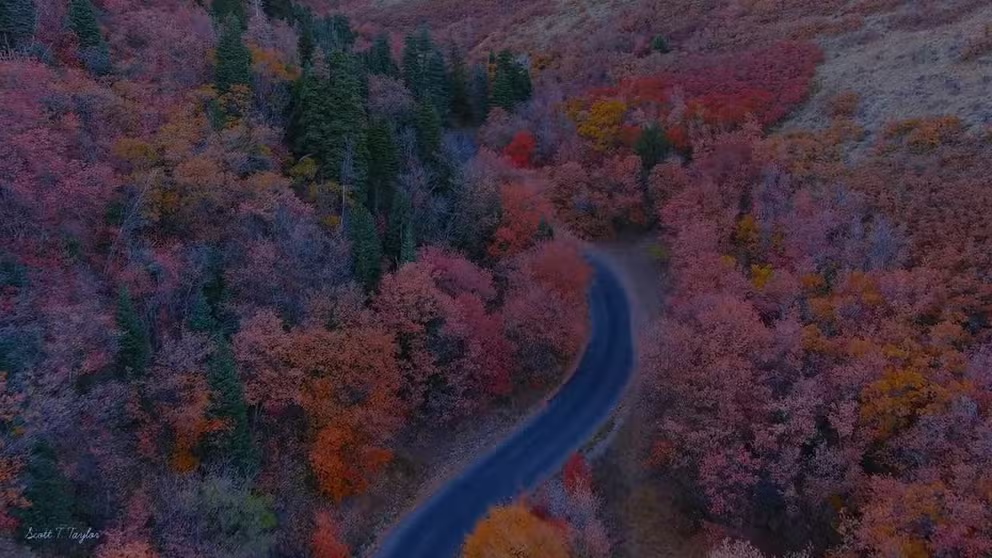How a GOES satellite will lead to a new generation of leaf peeping
Changes in leaves start occurring when trees and other vegetation receive less light. The lack of chlorophyll helps reveal yellow, orange and red pigments. Northern Alaska and the Denali National Park and Preserve are usually some of the first areas to see changes in foliage.
Drone footage captures fall foliage in Salt Lake County, Utah
Drone footage captures spectacular fall foliage in Butterfield Canyon, located in Salt Lake County, Utah. (Credit: Scott T Taylor/Twitter)
In an effort to enhance the accuracy of fall foliage predictions and observations, Explore Fall expects to start integrating satellite data into its map displays, showing where changes in the leaves could be the best.
During previous years, experts relied on ground observations, but those could be suspect due to people having varying opinions of what "low" or "peak" season means.
"Our maps will look similar to last year with smoothed color representing fall foliage status across the CONUS," Evan Fisher, founder and meteorologist at Explore Fall, explained. "However, the underlying data will be different. This year, we’re using deep learning models to understand the complex relationships between temperature, daylight, precipitation and fall color."
PIECE OF SUSPECTED SPACE DEBRIS FOUND IN RURAL NORTH CAROLINA
A key to the innovation is GOES-16 data, which is used to monitor weather systems over the Americas.
The group uses satellite imagery to calculate the normalized difference vegetation index, which is a measure of the greenness of vegetation. As the NDVI decreases during the fall, it gives forecasters an idea of the status of forested areas.
A region where the data could prove to be especially helpful is in the lower peninsula of Michigan.
Explore Fall annually receives few ground reports from the area, and older methods of determining the status of the leaves have proved to be error-prone.
The group hopes that with satellite reports, a more accurate picture will emerge for areas of the Wolverine State, including the Grand Rapids area.
The maps will get their first tests in a few months when leaves will start to change in Alaska and eventually filter down into Canada and the Lower 48.
Changes in leaves start occurring when trees and other vegetation start to receive less light, which helps reveal yellow, orange and red pigments in the leaves.
Northern Alaska and Denali National Park and Preserve are usually some of the first areas to see changes in foliage, which occur as early as late August.

Average peak fall color
(FOX Weather)
FALL FOLIAGE TRACKER: DISCOVER MAPS AND SEE THE MOST BRILLIANT COLORS BEFORE IT’S TOO LATE
What type of fall foliage season is ahead?
Summer will likely be scorching for most of the U.S., but the colorfulness of this year’s leaves will likely depend on precipitation.
Drought conditions are known to interrupt the leaf-changing process and lead to more muted colors, while rain can promote tree health and leaf retention.
"Fall color progression is very sensitive to day-to-day weather, and one cold snap or heat wave could make or break a seasonal outlook. This is why Explore Fall’s approach is so revolutionary. As soon as the data is available, we begin to adjust our forecasts to reflect real-time weather conditions," Fisher stated.
The upcoming fall season will be Explore Fall’s second year of providing real-time fall foliage maps.

(FOX Weather)
